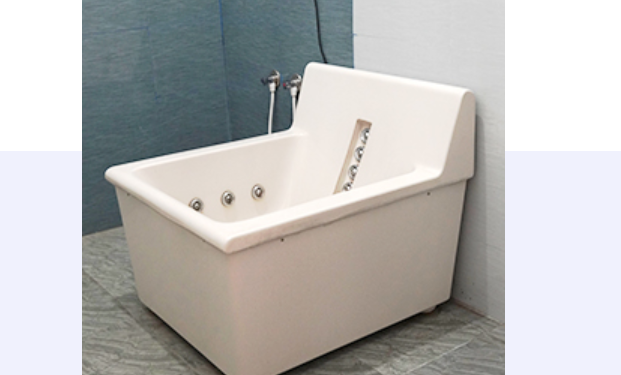In the modern world of wellness, one of the most powerful yet gentle therapies continues to be overlooked—healing with water. Used by ancient civilizations and endorsed by modern health professionals, this timeless approach is proving to be a valuable ally in reducing stress, alleviating pain, and accelerating recovery.
This article explores how aquatic treatments benefit the body and mind, the various types of water-based therapies available, and how you can integrate them into your lifestyle for better health and balance.
What is Hydrotherapy?
At its core, hydrotherapy is the practice of using water in different temperatures and forms to stimulate healing. Whether through hot baths, cold compresses, steam, or water jets, this method taps into the body’s natural responses to temperature changes, promoting circulation, relieving tension, and enhancing wellbeing.
What makes it unique is how adaptable it is. Whether in a high-end spa, a rehabilitation center, or the comfort of your home, water therapy fits seamlessly into any routine.
Types of Water-Based Therapies
Water can be used in many different ways to support the body's healing processes. Below are the most common methods that have stood the test of time:
1. Warm Baths and Soaking Tubs
Immersing yourself in warm water encourages relaxation and reduces muscle stiffness. Therapeutic bathing is especially effective for those with arthritis, fibromyalgia, or high-stress lifestyles.
2. Cold Water Immersion
Often used by athletes, this technique helps reduce inflammation, ease soreness, and support faster muscle recovery after physical activity.
3. Steam and Sauna Sessions
These treatments use heat and humidity to open the pores, eliminate toxins, and calm the nervous system. They are also known to support respiratory health and skin vitality.
4. Contrast Showers
Alternating between hot and cold water stimulates blood flow and energizes the body. This approach is a popular method for strengthening immunity and revitalizing tired muscles.
5. Aquatic Exercise
Low-impact workouts in a pool provide the benefits of physical activity without straining the joints. Aquatic rehabilitation is especially helpful for elderly individuals and those recovering from injuries or surgeries.
Health Benefits of Water Therapy
Using water as a healing tool offers both physical and mental health advantages. Here are some of the most notable benefits:
Pain Reduction: Warm water relaxes tight muscles and eases joint pain, providing natural relief from chronic discomfort.
Improved Circulation: Changes in water temperature stimulate blood flow, which supports cell regeneration and oxygen delivery.
Stress Management: Immersion in warm water or exposure to steam creates a sense of calm and promotes mental clarity.
Faster Recovery: For those recovering from surgery or trauma, aquatic treatment offers a gentle way to rebuild strength.
Better Sleep: Evening baths signal the body to wind down, improving sleep quality and supporting overall restfulness.
Who Can Benefit from Aquatic Treatment?
This form of natural healing is suitable for nearly everyone. Whether you’re a working professional seeking stress relief, an athlete managing muscle recovery, or someone living with a chronic condition, incorporating water therapy into your wellness plan can make a noticeable difference.
It’s especially beneficial for:
Individuals with arthritis or joint issues
Post-surgical patients
People experiencing high stress or anxiety
Elderly individuals seeking gentle movement therapy
Fitness enthusiasts looking for recovery support
As with any health regimen, those with medical conditions should consult their healthcare provider before starting.
Starting Your Water Therapy Journey
Introducing water-based healing into your life doesn't require expensive equipment or professional sessions. Simple practices like a warm bath after work or a cool foot soak in the summer can go a long way in improving your physical and emotional state.
Here are a few tips to help you begin:
Use essential oils or Epsom salt for enhanced effects in your bath
Try contrast showers in the morning for a natural energy boost
Visit a local spa or wellness center to explore guided treatments
Stay hydrated before and after any session
Always listen to your body and avoid extremes in temperature
Water Healing in Today’s Wellness Culture
As people increasingly seek natural recovery methods, the use of water as a therapeutic agent is gaining momentum. It’s affordable, non-invasive, and deeply rooted in both science and tradition. In a world filled with overstimulation, this gentle and effective therapy offers a refreshing path to balance.
Whether you're exploring it for relaxation or recovery, water-based care provides a timeless solution for modern-day wellness challenges.
Final Thoughts
Hydrotherapy is more than just a wellness trend—it’s a time-tested approach that supports the body’s natural ability to heal and recover. With simple, consistent practice, you can reduce pain, manage stress, and improve your quality of life—all with the healing touch of water.
By embracing this gentle form of therapy, you’re not just treating your symptoms—you’re nurturing your whole self. Let water be your guide to a calmer, healthier you.
FAQs
Q1: Can water therapy help with chronic pain?
Yes. Warm water immersion can significantly reduce pain related to arthritis, injuries, and muscle tension.
Q2: How often should I use water-based treatments?
For general wellness, 2–3 times a week is ideal. More frequent sessions may be beneficial during recovery periods.
Q3: Are there risks associated with this treatment?
Most people tolerate it well, but those with heart disease, skin infections, or circulatory issues should consult a doctor.
Q4: Does this therapy require a special facility?
No. Many benefits can be experienced at home with basic setups like a bathtub, shower, or foot basin.
